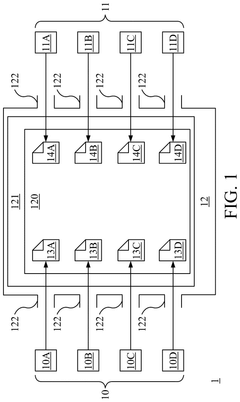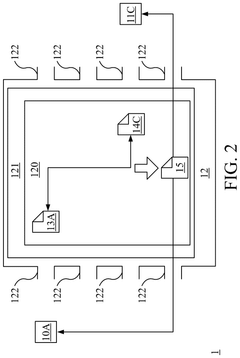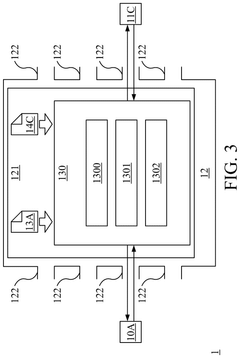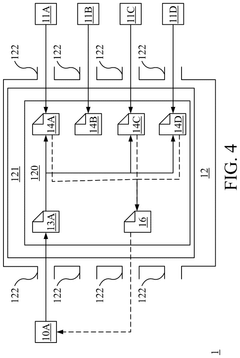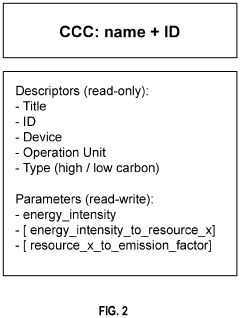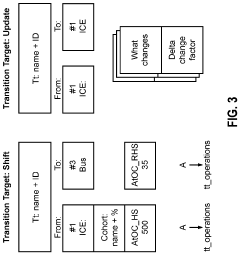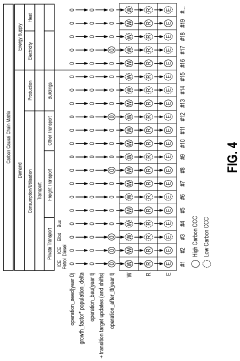Submersible pumps in climate change adaptation strategies.
JUL 15, 20259 MIN READ
Generate Your Research Report Instantly with AI Agent
Patsnap Eureka helps you evaluate technical feasibility & market potential.
Climate Change Impacts on Water Management
Climate change is significantly altering the global water cycle, leading to profound impacts on water management strategies worldwide. Rising temperatures are accelerating evaporation rates, intensifying the hydrological cycle, and causing more frequent and severe extreme weather events. These changes are disrupting traditional water management practices and necessitating adaptive measures to ensure water security.
One of the most pressing challenges is the increased variability in precipitation patterns. Many regions are experiencing longer dry spells interspersed with more intense rainfall events. This shift is straining existing water infrastructure, designed for historical climate conditions, and requiring new approaches to water storage, distribution, and flood management.
Sea-level rise poses a significant threat to coastal aquifers and water treatment facilities. Saltwater intrusion is contaminating freshwater sources, reducing the availability of potable water in coastal areas. This phenomenon is forcing water managers to explore alternative water sources and implement innovative desalination technologies.
Climate change is also affecting water quality. Higher temperatures promote algal blooms and increase the concentration of pollutants in water bodies, necessitating more advanced treatment processes. Additionally, extreme weather events can overwhelm wastewater treatment systems, leading to the release of untreated sewage into the environment.
The melting of glaciers and snow packs is altering the timing and volume of river flows, particularly in regions dependent on snowmelt for their water supply. This change is disrupting agricultural practices, hydropower generation, and ecosystem services, requiring a reevaluation of water allocation strategies and the development of more resilient water management systems.
Water scarcity is becoming more prevalent in many parts of the world due to climate change. This is leading to increased competition for water resources among different sectors, including agriculture, industry, and domestic use. Water managers are now faced with the challenge of balancing these competing demands while ensuring environmental sustainability.
To address these challenges, water management strategies are evolving to incorporate climate change adaptation measures. These include the implementation of water-efficient technologies, the development of climate-resilient infrastructure, and the adoption of integrated water resources management approaches. Nature-based solutions, such as wetland restoration and green infrastructure, are also gaining prominence as effective tools for enhancing water security and resilience in the face of climate change.
One of the most pressing challenges is the increased variability in precipitation patterns. Many regions are experiencing longer dry spells interspersed with more intense rainfall events. This shift is straining existing water infrastructure, designed for historical climate conditions, and requiring new approaches to water storage, distribution, and flood management.
Sea-level rise poses a significant threat to coastal aquifers and water treatment facilities. Saltwater intrusion is contaminating freshwater sources, reducing the availability of potable water in coastal areas. This phenomenon is forcing water managers to explore alternative water sources and implement innovative desalination technologies.
Climate change is also affecting water quality. Higher temperatures promote algal blooms and increase the concentration of pollutants in water bodies, necessitating more advanced treatment processes. Additionally, extreme weather events can overwhelm wastewater treatment systems, leading to the release of untreated sewage into the environment.
The melting of glaciers and snow packs is altering the timing and volume of river flows, particularly in regions dependent on snowmelt for their water supply. This change is disrupting agricultural practices, hydropower generation, and ecosystem services, requiring a reevaluation of water allocation strategies and the development of more resilient water management systems.
Water scarcity is becoming more prevalent in many parts of the world due to climate change. This is leading to increased competition for water resources among different sectors, including agriculture, industry, and domestic use. Water managers are now faced with the challenge of balancing these competing demands while ensuring environmental sustainability.
To address these challenges, water management strategies are evolving to incorporate climate change adaptation measures. These include the implementation of water-efficient technologies, the development of climate-resilient infrastructure, and the adoption of integrated water resources management approaches. Nature-based solutions, such as wetland restoration and green infrastructure, are also gaining prominence as effective tools for enhancing water security and resilience in the face of climate change.
Market Analysis for Submersible Pumps
The global market for submersible pumps is experiencing significant growth, driven by increasing demand in various sectors, particularly in the context of climate change adaptation strategies. As extreme weather events become more frequent and severe, the need for efficient water management solutions has intensified, positioning submersible pumps as crucial components in flood control, irrigation, and water supply systems.
The market size for submersible pumps is projected to expand substantially over the next decade, with a compound annual growth rate (CAGR) exceeding the overall pump industry average. This growth is attributed to the rising awareness of climate change impacts and the subsequent implementation of adaptation measures by governments and private entities worldwide.
Key market segments for submersible pumps include agriculture, municipal water management, construction, and industrial applications. The agricultural sector, in particular, is expected to be a major driver of demand as farmers seek to mitigate the effects of droughts and erratic rainfall patterns on crop yields. Municipal water management systems are also upgrading their infrastructure to cope with increased flooding risks and water scarcity issues, further boosting the demand for submersible pumps.
Geographically, developing regions such as Asia-Pacific and Africa are anticipated to witness the highest growth rates in the submersible pump market. These regions are particularly vulnerable to climate change impacts and are investing heavily in water management infrastructure. Developed markets in North America and Europe are also showing steady growth, primarily driven by the need to replace aging water management systems and adapt to changing climate patterns.
The market is characterized by a mix of established global players and regional manufacturers. Leading companies are focusing on developing energy-efficient and smart submersible pumps that can operate effectively in diverse environmental conditions. There is a growing trend towards the integration of IoT and AI technologies in pump systems, allowing for predictive maintenance and optimized performance in varying climate scenarios.
Customer preferences are shifting towards pumps with higher durability, energy efficiency, and adaptability to extreme conditions. This trend is pushing manufacturers to innovate and develop pumps that can withstand prolonged submersion, operate in high-temperature environments, and handle varying water qualities.
Regulatory factors are also shaping the market landscape. Stricter environmental regulations and energy efficiency standards are driving the demand for eco-friendly and energy-efficient submersible pump solutions. Governments' increasing focus on climate resilience in infrastructure planning is creating new opportunities for submersible pump manufacturers to participate in large-scale adaptation projects.
The market size for submersible pumps is projected to expand substantially over the next decade, with a compound annual growth rate (CAGR) exceeding the overall pump industry average. This growth is attributed to the rising awareness of climate change impacts and the subsequent implementation of adaptation measures by governments and private entities worldwide.
Key market segments for submersible pumps include agriculture, municipal water management, construction, and industrial applications. The agricultural sector, in particular, is expected to be a major driver of demand as farmers seek to mitigate the effects of droughts and erratic rainfall patterns on crop yields. Municipal water management systems are also upgrading their infrastructure to cope with increased flooding risks and water scarcity issues, further boosting the demand for submersible pumps.
Geographically, developing regions such as Asia-Pacific and Africa are anticipated to witness the highest growth rates in the submersible pump market. These regions are particularly vulnerable to climate change impacts and are investing heavily in water management infrastructure. Developed markets in North America and Europe are also showing steady growth, primarily driven by the need to replace aging water management systems and adapt to changing climate patterns.
The market is characterized by a mix of established global players and regional manufacturers. Leading companies are focusing on developing energy-efficient and smart submersible pumps that can operate effectively in diverse environmental conditions. There is a growing trend towards the integration of IoT and AI technologies in pump systems, allowing for predictive maintenance and optimized performance in varying climate scenarios.
Customer preferences are shifting towards pumps with higher durability, energy efficiency, and adaptability to extreme conditions. This trend is pushing manufacturers to innovate and develop pumps that can withstand prolonged submersion, operate in high-temperature environments, and handle varying water qualities.
Regulatory factors are also shaping the market landscape. Stricter environmental regulations and energy efficiency standards are driving the demand for eco-friendly and energy-efficient submersible pump solutions. Governments' increasing focus on climate resilience in infrastructure planning is creating new opportunities for submersible pump manufacturers to participate in large-scale adaptation projects.
Current Challenges in Submersible Pump Technology
Submersible pumps face several significant challenges in the context of climate change adaptation strategies. One of the primary issues is the increasing frequency and severity of extreme weather events, which can lead to flooding and water contamination. These conditions put additional stress on submersible pumps, requiring them to operate under more demanding circumstances and for longer periods.
The rising sea levels and increased groundwater salinity pose another challenge for submersible pump technology. As saltwater intrusion becomes more prevalent in coastal areas, pumps must be designed to withstand corrosion and maintain efficiency in saline environments. This necessitates the development of more robust materials and advanced sealing technologies to protect the pump's internal components.
Energy efficiency remains a critical concern in submersible pump design. As climate change mitigation efforts call for reduced carbon emissions, there is a growing need for pumps that consume less power while maintaining or improving performance. This challenge is compounded by the fact that many regions experiencing water stress also face energy scarcity, making it essential to develop pumps that can operate effectively with limited power resources.
The variability in water availability due to changing precipitation patterns presents another hurdle for submersible pump technology. Pumps must be adaptable to fluctuating water levels and be capable of operating efficiently across a wide range of flow rates. This requires advanced control systems and variable speed drives that can adjust pump performance based on real-time conditions.
Maintenance and reliability are increasingly important factors as submersible pumps are deployed in more remote and challenging environments. The need for pumps that require less frequent maintenance and have longer operational lifespans is growing, particularly in areas where access to technical expertise and replacement parts may be limited.
The integration of smart technologies and IoT capabilities into submersible pumps is another area of development that presents both opportunities and challenges. While these technologies can improve pump efficiency and enable predictive maintenance, they also introduce new complexities in terms of data security, connectivity in remote areas, and the need for specialized skills in pump operation and maintenance.
Lastly, the affordability of advanced submersible pump technologies remains a significant challenge, especially for developing countries that are often most vulnerable to climate change impacts. Balancing the need for high-performance, resilient pumps with cost-effectiveness is crucial to ensure widespread adoption of these technologies in climate change adaptation strategies.
The rising sea levels and increased groundwater salinity pose another challenge for submersible pump technology. As saltwater intrusion becomes more prevalent in coastal areas, pumps must be designed to withstand corrosion and maintain efficiency in saline environments. This necessitates the development of more robust materials and advanced sealing technologies to protect the pump's internal components.
Energy efficiency remains a critical concern in submersible pump design. As climate change mitigation efforts call for reduced carbon emissions, there is a growing need for pumps that consume less power while maintaining or improving performance. This challenge is compounded by the fact that many regions experiencing water stress also face energy scarcity, making it essential to develop pumps that can operate effectively with limited power resources.
The variability in water availability due to changing precipitation patterns presents another hurdle for submersible pump technology. Pumps must be adaptable to fluctuating water levels and be capable of operating efficiently across a wide range of flow rates. This requires advanced control systems and variable speed drives that can adjust pump performance based on real-time conditions.
Maintenance and reliability are increasingly important factors as submersible pumps are deployed in more remote and challenging environments. The need for pumps that require less frequent maintenance and have longer operational lifespans is growing, particularly in areas where access to technical expertise and replacement parts may be limited.
The integration of smart technologies and IoT capabilities into submersible pumps is another area of development that presents both opportunities and challenges. While these technologies can improve pump efficiency and enable predictive maintenance, they also introduce new complexities in terms of data security, connectivity in remote areas, and the need for specialized skills in pump operation and maintenance.
Lastly, the affordability of advanced submersible pump technologies remains a significant challenge, especially for developing countries that are often most vulnerable to climate change impacts. Balancing the need for high-performance, resilient pumps with cost-effectiveness is crucial to ensure widespread adoption of these technologies in climate change adaptation strategies.
Existing Adaptation Strategies Using Submersible Pumps
01 Design and construction of submersible pumps
Submersible pumps are designed to operate while fully submerged in liquid. They typically consist of a sealed motor connected to a pump body, allowing for efficient operation in deep wells or underwater environments. The construction often includes corrosion-resistant materials and specialized sealing techniques to prevent water ingress into the motor.- Design and construction of submersible pumps: Submersible pumps are designed to operate while fully submerged in liquid. They typically consist of a sealed motor coupled to a pump body. The design focuses on efficient operation underwater, including features for cooling, pressure equalization, and protection against water ingress.
- Control systems for submersible pumps: Advanced control systems are implemented to optimize the performance of submersible pumps. These systems may include sensors for monitoring pump conditions, variable frequency drives for adjusting pump speed, and remote monitoring capabilities for efficient operation and maintenance.
- Energy efficiency improvements in submersible pumps: Innovations in submersible pump technology focus on improving energy efficiency. This includes the development of high-efficiency motors, optimized impeller designs, and the use of advanced materials to reduce friction and improve overall pump performance.
- Specialized submersible pumps for specific applications: Submersible pumps are designed for various specialized applications, such as oil and gas extraction, wastewater treatment, and deep-sea operations. These pumps feature specific adaptations to handle different types of fluids, pressures, and environmental conditions.
- Maintenance and reliability enhancements: Advancements in submersible pump technology focus on improving reliability and ease of maintenance. This includes the development of self-diagnostic systems, modular designs for easy component replacement, and materials resistant to corrosion and wear in harsh underwater environments.
02 Control systems for submersible pumps
Advanced control systems are implemented to optimize the performance and efficiency of submersible pumps. These systems may include variable frequency drives, pressure sensors, and flow meters to adjust pump operation based on demand. Remote monitoring and control capabilities are often integrated to allow for real-time management and troubleshooting.Expand Specific Solutions03 Energy efficiency improvements in submersible pumps
Innovations in submersible pump technology focus on improving energy efficiency. This includes the development of high-efficiency motors, optimized impeller designs, and the use of advanced materials to reduce friction and wear. Some designs incorporate energy recovery systems to further enhance overall efficiency.Expand Specific Solutions04 Specialized submersible pumps for harsh environments
Submersible pumps designed for harsh environments, such as deep-sea operations or chemical processing, incorporate specialized features. These may include enhanced pressure resistance, thermal management systems, and compatibility with corrosive or abrasive fluids. Such pumps often utilize advanced materials and coatings to withstand extreme conditions.Expand Specific Solutions05 Maintenance and monitoring of submersible pumps
Innovative approaches to maintenance and monitoring of submersible pumps are developed to extend operational life and reduce downtime. These include the integration of sensors for predictive maintenance, modular designs for easy replacement of components, and the use of non-invasive diagnostic techniques to assess pump health without removal from the installation site.Expand Specific Solutions
Key Players in Submersible Pump Industry
The submersible pump market in climate change adaptation strategies is in a growth phase, driven by increasing global focus on water management and flood control. The market size is expanding, with projections indicating significant growth in the coming years. Technologically, the field is advancing rapidly, with companies like Schlumberger, Baker Hughes, and Grundfos leading innovation. These firms are developing more efficient, durable, and smart submersible pumps capable of handling extreme weather conditions. Academic institutions such as Jiangsu University and Hohai University are contributing to research and development, particularly in areas of pump efficiency and environmental impact mitigation. The industry is seeing a trend towards integrating IoT and AI technologies to enhance pump performance and predictive maintenance capabilities.
Schlumberger Technologies, Inc.
Technical Solution: Schlumberger has developed cutting-edge submersible pump technologies for climate change adaptation, particularly in the water and energy sectors. Their pumps feature advanced materials and coatings resistant to corrosion and erosion, enabling operation in harsh environments affected by climate change[1]. Schlumberger's submersible pumps incorporate smart sensors and real-time monitoring systems, allowing for adaptive operation in response to changing water levels, temperatures, and quality. The company has also developed energy-efficient pump designs with optimized hydraulics and high-efficiency motors, reducing carbon footprint in pump operations[2]. Schlumberger's climate-adaptive pumps include models specifically designed for managed aquifer recharge and saltwater intrusion prevention in coastal aquifers[3].
Strengths: Advanced materials science, smart monitoring systems, and specialized designs for climate-related water challenges. Weaknesses: Primarily focused on energy sector applications, potentially limiting broader water management solutions.
Baker Hughes Co.
Technical Solution: Baker Hughes has developed advanced submersible pump systems for climate change adaptation in both water management and energy sectors. Their pumps feature high-temperature resistant materials and advanced sealing technologies, allowing operation in geothermal applications and extreme climate conditions[1]. Baker Hughes has integrated IoT and AI technologies into their submersible pump systems, enabling predictive maintenance and real-time performance optimization to adapt to changing environmental conditions[2]. The company's pumps also incorporate energy-efficient designs and variable speed drives, reducing power consumption and enabling operation with renewable energy sources. Baker Hughes has developed specialized submersible pumps for carbon capture and storage projects, contributing to climate change mitigation efforts[3].
Strengths: Expertise in extreme environment applications, advanced IoT integration, and contributions to both adaptation and mitigation strategies. Weaknesses: High technological complexity may lead to increased costs and maintenance requirements.
Innovative Pump Technologies for Climate Resilience
Collaborative nexus device for solving climate change mitigation and water sustainability and system including thereof
PatentPendingUS20240412301A1
Innovation
- A web-based collaborative platform that connects entities with request and bidding ends, facilitating data collection, talent matching, and task management, while providing incentives for expedited problem-solving through a comprehensive platform for climate and water-related challenges.
Computational modeling, climate plan scoring, and data tagging
PatentPendingUS20230169231A1
Innovation
- A system utilizing a carbon causal chain model that represents the flow from policy actions to human activities to emissions, allowing for data structures to model and visualize transitions, and a computational framework to prioritize and select climate plans based on ambition and success probability data structures.
Environmental Regulations for Pump Operations
Environmental regulations for pump operations have become increasingly stringent in response to climate change concerns and the need for sustainable water management practices. These regulations aim to minimize the environmental impact of submersible pumps while ensuring their effective use in climate change adaptation strategies.
One of the primary focuses of environmental regulations is energy efficiency. Many jurisdictions now require submersible pumps to meet specific energy performance standards, such as those set by the U.S. Department of Energy or the European Union's Ecodesign Directive. These standards mandate minimum efficiency levels for various pump types and sizes, encouraging manufacturers to develop more energy-efficient models that reduce greenhouse gas emissions and operational costs.
Water quality protection is another critical aspect of pump operation regulations. Strict guidelines are in place to prevent contamination of water sources during pump installation, operation, and maintenance. These regulations often require the use of environmentally friendly lubricants and sealants, as well as proper disposal methods for any waste generated during pump operations. Additionally, regulations may mandate regular water quality monitoring and reporting to ensure compliance with environmental standards.
Noise pollution is also addressed in many environmental regulations for pump operations. Submersible pumps used in urban areas or sensitive ecosystems may be subject to noise level restrictions, requiring manufacturers to develop quieter pump designs or implement noise reduction measures during installation and operation.
Regulations often extend to the materials used in pump construction. Many jurisdictions now prohibit or restrict the use of certain hazardous materials, such as lead or mercury, in pump components. This shift towards more environmentally friendly materials helps reduce the potential for contamination and improves the overall sustainability of pump operations.
Habitat protection is another crucial aspect of environmental regulations for submersible pumps. In areas with sensitive aquatic ecosystems, regulations may require the installation of fish screens or other protective measures to prevent harm to local wildlife. Additionally, regulations may limit pump operations during specific seasons or in certain areas to protect spawning grounds or migratory patterns of aquatic species.
As climate change impacts become more severe, regulations are evolving to address new challenges. For instance, some jurisdictions are implementing regulations that require pumps to be designed and installed with consideration for future sea-level rise or increased flood risks. These forward-looking regulations aim to ensure the long-term resilience and effectiveness of submersible pumps in climate change adaptation strategies.
Compliance with these environmental regulations often requires careful planning and documentation. Pump operators may be required to maintain detailed records of pump performance, maintenance activities, and environmental impact assessments. Regular audits and inspections may be conducted to ensure ongoing compliance with regulatory requirements.
One of the primary focuses of environmental regulations is energy efficiency. Many jurisdictions now require submersible pumps to meet specific energy performance standards, such as those set by the U.S. Department of Energy or the European Union's Ecodesign Directive. These standards mandate minimum efficiency levels for various pump types and sizes, encouraging manufacturers to develop more energy-efficient models that reduce greenhouse gas emissions and operational costs.
Water quality protection is another critical aspect of pump operation regulations. Strict guidelines are in place to prevent contamination of water sources during pump installation, operation, and maintenance. These regulations often require the use of environmentally friendly lubricants and sealants, as well as proper disposal methods for any waste generated during pump operations. Additionally, regulations may mandate regular water quality monitoring and reporting to ensure compliance with environmental standards.
Noise pollution is also addressed in many environmental regulations for pump operations. Submersible pumps used in urban areas or sensitive ecosystems may be subject to noise level restrictions, requiring manufacturers to develop quieter pump designs or implement noise reduction measures during installation and operation.
Regulations often extend to the materials used in pump construction. Many jurisdictions now prohibit or restrict the use of certain hazardous materials, such as lead or mercury, in pump components. This shift towards more environmentally friendly materials helps reduce the potential for contamination and improves the overall sustainability of pump operations.
Habitat protection is another crucial aspect of environmental regulations for submersible pumps. In areas with sensitive aquatic ecosystems, regulations may require the installation of fish screens or other protective measures to prevent harm to local wildlife. Additionally, regulations may limit pump operations during specific seasons or in certain areas to protect spawning grounds or migratory patterns of aquatic species.
As climate change impacts become more severe, regulations are evolving to address new challenges. For instance, some jurisdictions are implementing regulations that require pumps to be designed and installed with consideration for future sea-level rise or increased flood risks. These forward-looking regulations aim to ensure the long-term resilience and effectiveness of submersible pumps in climate change adaptation strategies.
Compliance with these environmental regulations often requires careful planning and documentation. Pump operators may be required to maintain detailed records of pump performance, maintenance activities, and environmental impact assessments. Regular audits and inspections may be conducted to ensure ongoing compliance with regulatory requirements.
Energy Efficiency in Submersible Pump Systems
Energy efficiency in submersible pump systems has become a critical focus in the context of climate change adaptation strategies. As global temperatures rise and water resources become increasingly scarce, the need for efficient water management solutions has never been more pressing. Submersible pumps play a vital role in various applications, from agriculture and industrial processes to municipal water supply and wastewater treatment.
The primary challenge in improving energy efficiency lies in optimizing the pump's design and operation to minimize power consumption while maintaining or enhancing performance. This involves addressing several key factors, including hydraulic efficiency, motor efficiency, and overall system design.
Hydraulic efficiency improvements focus on refining the pump's impeller and diffuser designs to reduce friction losses and improve flow characteristics. Advanced computational fluid dynamics (CFD) simulations are now being employed to optimize these components, resulting in more streamlined designs that can significantly reduce energy consumption.
Motor efficiency is another crucial aspect of submersible pump systems. The adoption of high-efficiency motors, such as permanent magnet synchronous motors (PMSMs), has shown promising results in reducing energy consumption. These motors offer superior performance, especially at partial loads, which is common in many pump applications.
Variable frequency drives (VFDs) have emerged as a game-changing technology in submersible pump systems. By allowing pumps to operate at varying speeds based on demand, VFDs can dramatically reduce energy consumption during periods of low demand. This technology not only saves energy but also extends the life of the pump by reducing wear and tear.
System-level optimization is equally important in achieving overall energy efficiency. This includes proper sizing of pumps, minimizing pipe friction losses, and implementing intelligent control systems. Smart pump controllers that can adapt to changing conditions and optimize pump operation in real-time are becoming increasingly common.
The integration of renewable energy sources, particularly solar power, with submersible pump systems is gaining traction in remote areas and regions with unreliable grid power. Solar-powered submersible pumps offer a sustainable solution for irrigation and water supply in off-grid locations, contributing to both energy efficiency and climate change mitigation.
As water scarcity becomes more prevalent due to climate change, the importance of leak detection and prevention in water distribution systems cannot be overstated. Advanced monitoring systems using IoT sensors and data analytics are being developed to detect and locate leaks quickly, thereby reducing water loss and the energy wasted in pumping water that never reaches its intended destination.
The primary challenge in improving energy efficiency lies in optimizing the pump's design and operation to minimize power consumption while maintaining or enhancing performance. This involves addressing several key factors, including hydraulic efficiency, motor efficiency, and overall system design.
Hydraulic efficiency improvements focus on refining the pump's impeller and diffuser designs to reduce friction losses and improve flow characteristics. Advanced computational fluid dynamics (CFD) simulations are now being employed to optimize these components, resulting in more streamlined designs that can significantly reduce energy consumption.
Motor efficiency is another crucial aspect of submersible pump systems. The adoption of high-efficiency motors, such as permanent magnet synchronous motors (PMSMs), has shown promising results in reducing energy consumption. These motors offer superior performance, especially at partial loads, which is common in many pump applications.
Variable frequency drives (VFDs) have emerged as a game-changing technology in submersible pump systems. By allowing pumps to operate at varying speeds based on demand, VFDs can dramatically reduce energy consumption during periods of low demand. This technology not only saves energy but also extends the life of the pump by reducing wear and tear.
System-level optimization is equally important in achieving overall energy efficiency. This includes proper sizing of pumps, minimizing pipe friction losses, and implementing intelligent control systems. Smart pump controllers that can adapt to changing conditions and optimize pump operation in real-time are becoming increasingly common.
The integration of renewable energy sources, particularly solar power, with submersible pump systems is gaining traction in remote areas and regions with unreliable grid power. Solar-powered submersible pumps offer a sustainable solution for irrigation and water supply in off-grid locations, contributing to both energy efficiency and climate change mitigation.
As water scarcity becomes more prevalent due to climate change, the importance of leak detection and prevention in water distribution systems cannot be overstated. Advanced monitoring systems using IoT sensors and data analytics are being developed to detect and locate leaks quickly, thereby reducing water loss and the energy wasted in pumping water that never reaches its intended destination.
Unlock deeper insights with Patsnap Eureka Quick Research — get a full tech report to explore trends and direct your research. Try now!
Generate Your Research Report Instantly with AI Agent
Supercharge your innovation with Patsnap Eureka AI Agent Platform!
